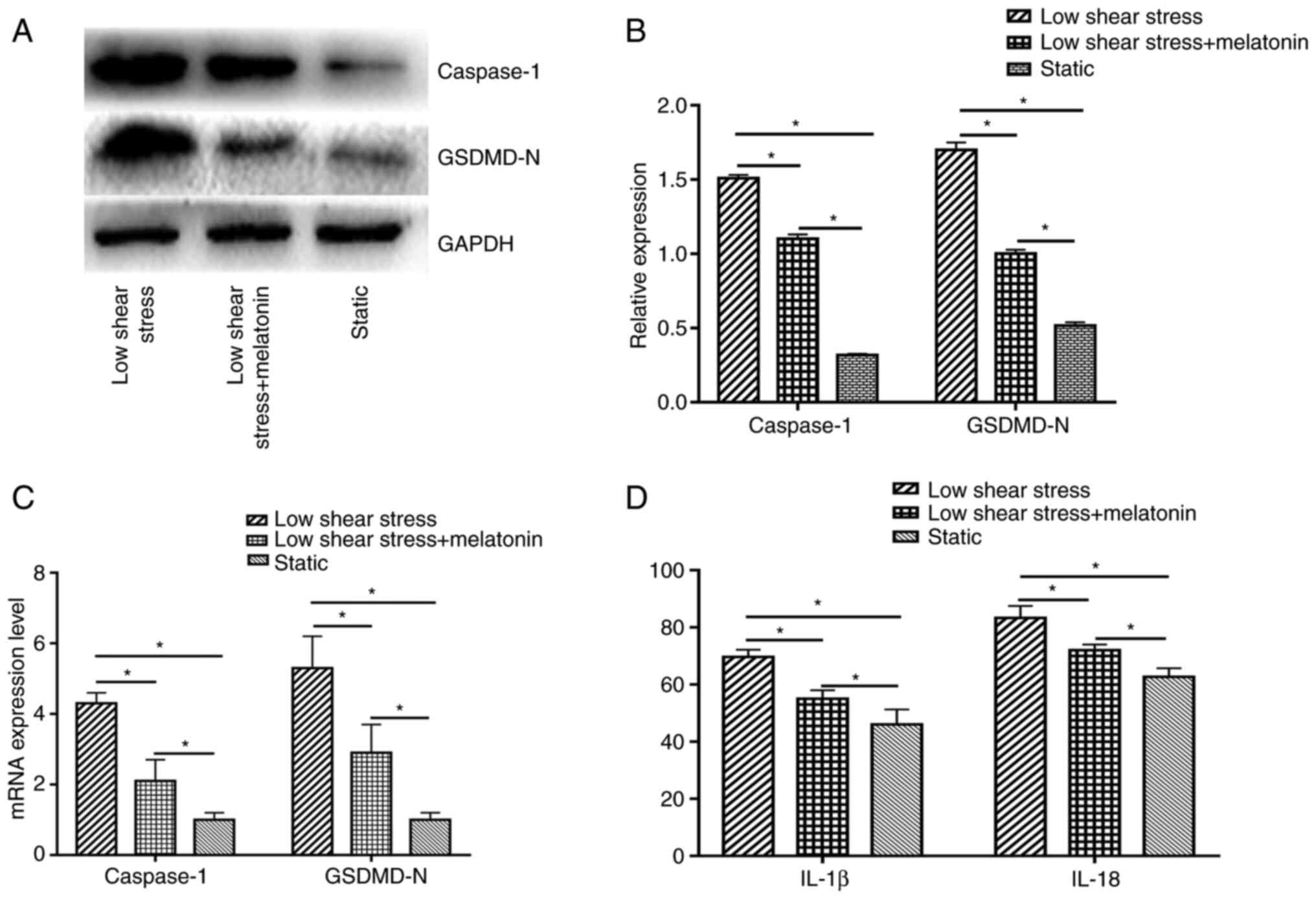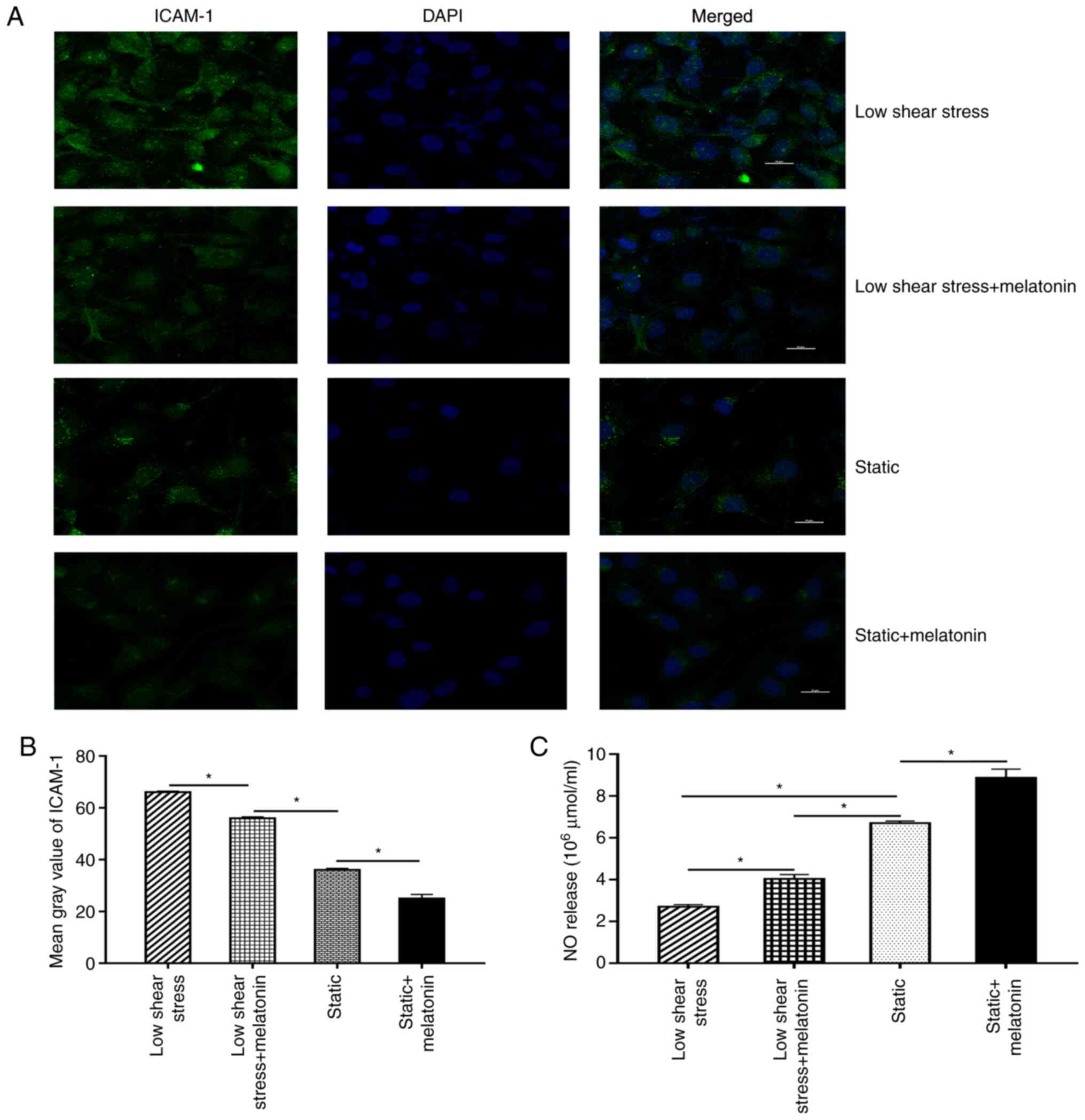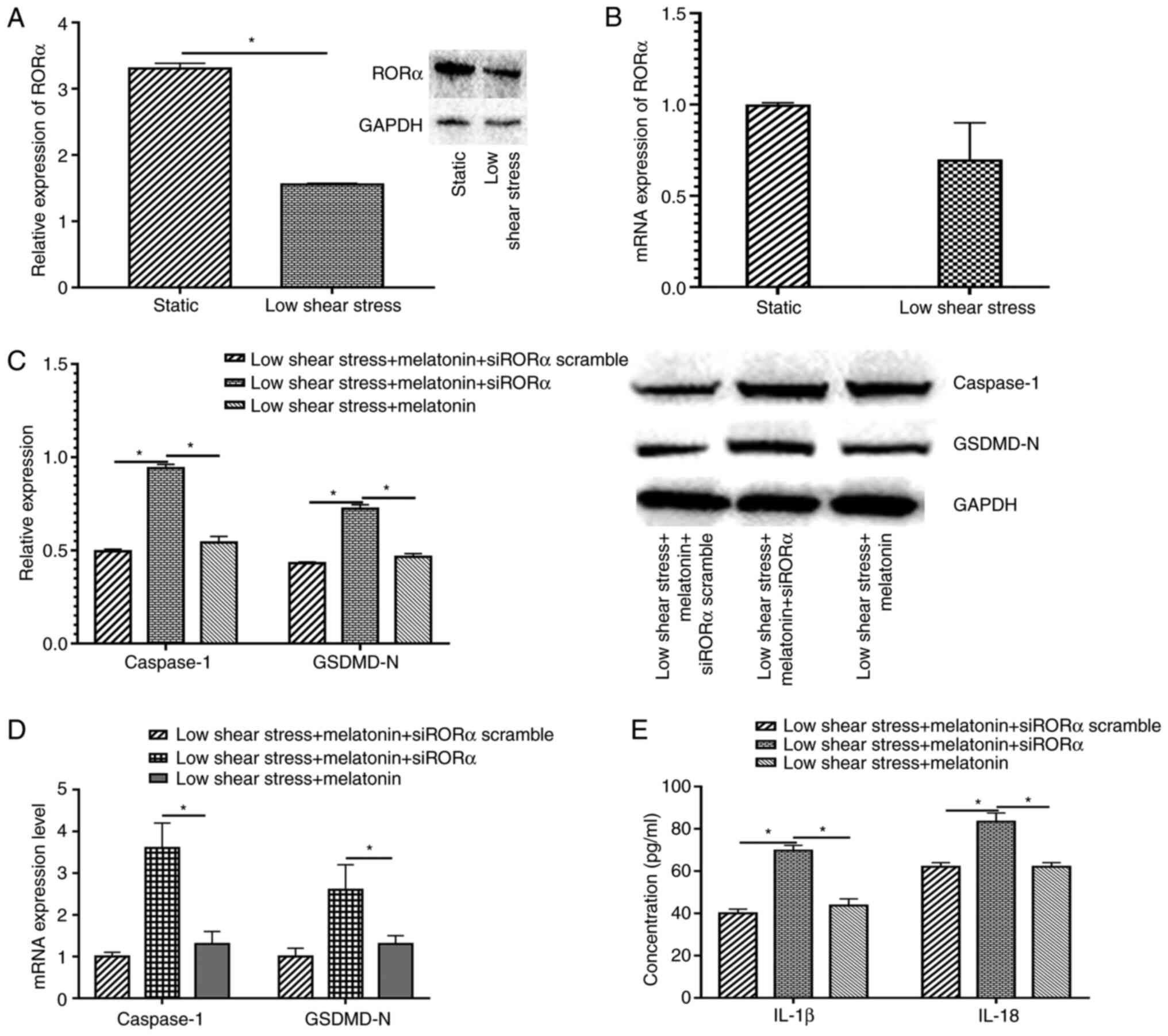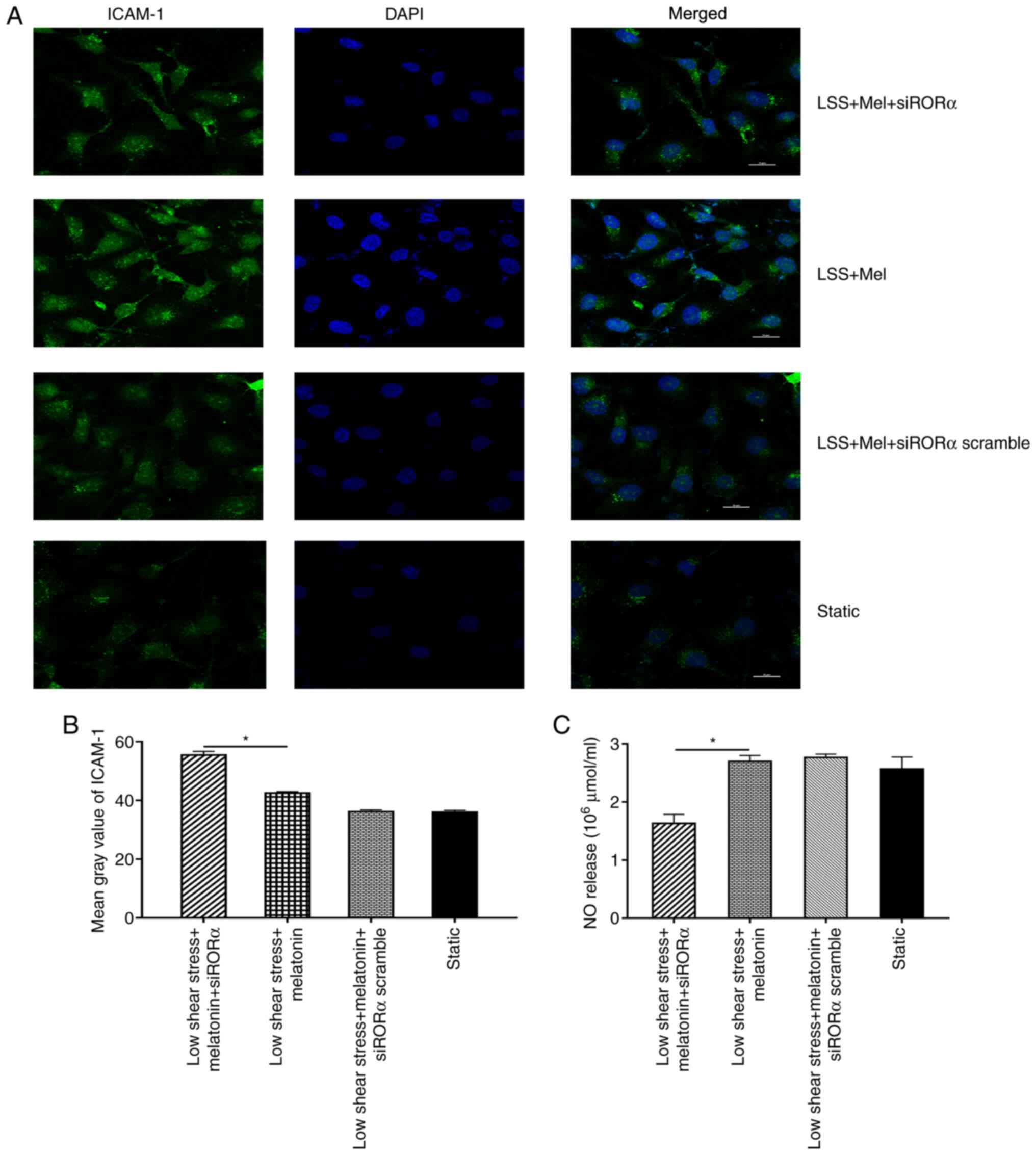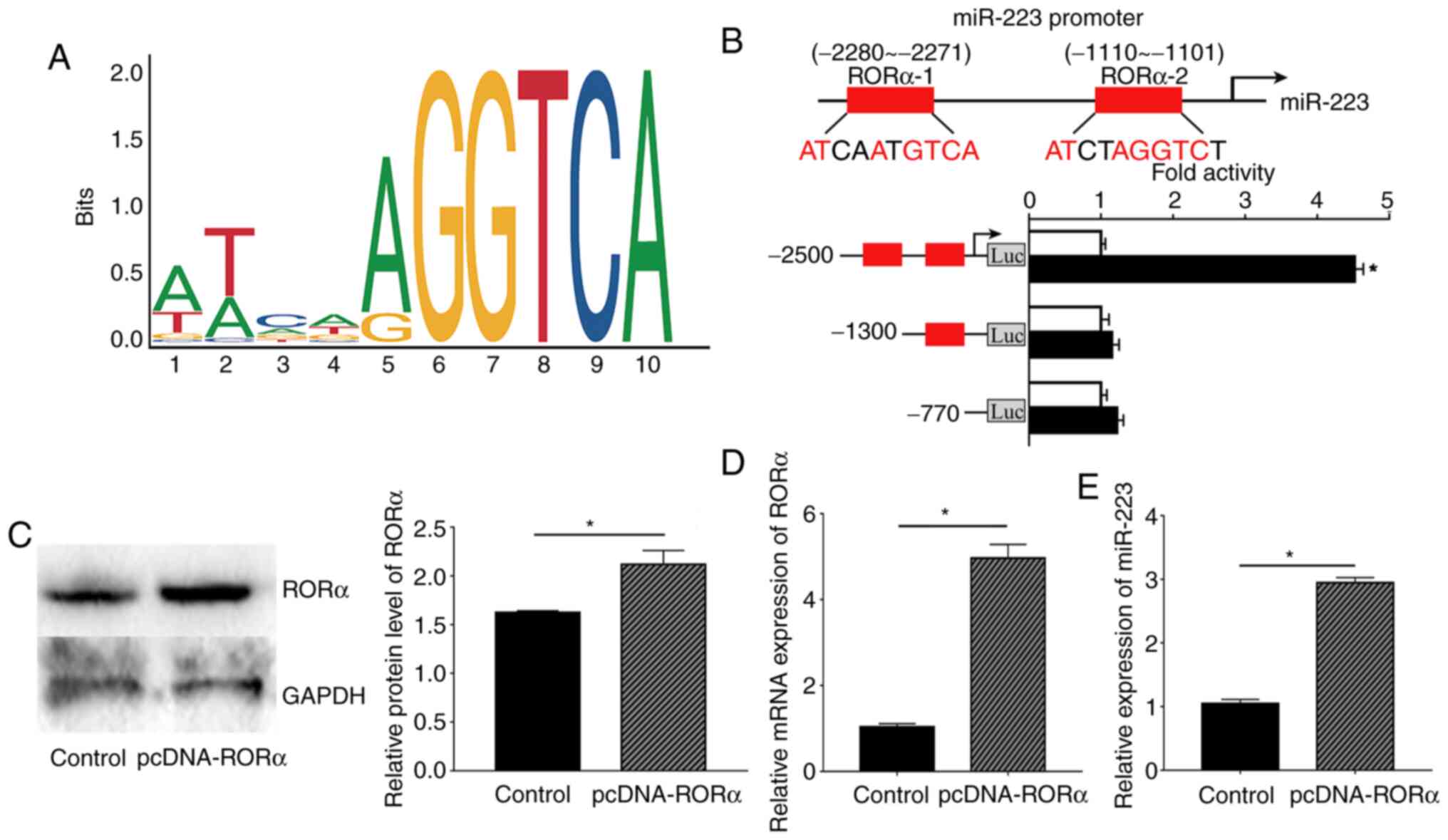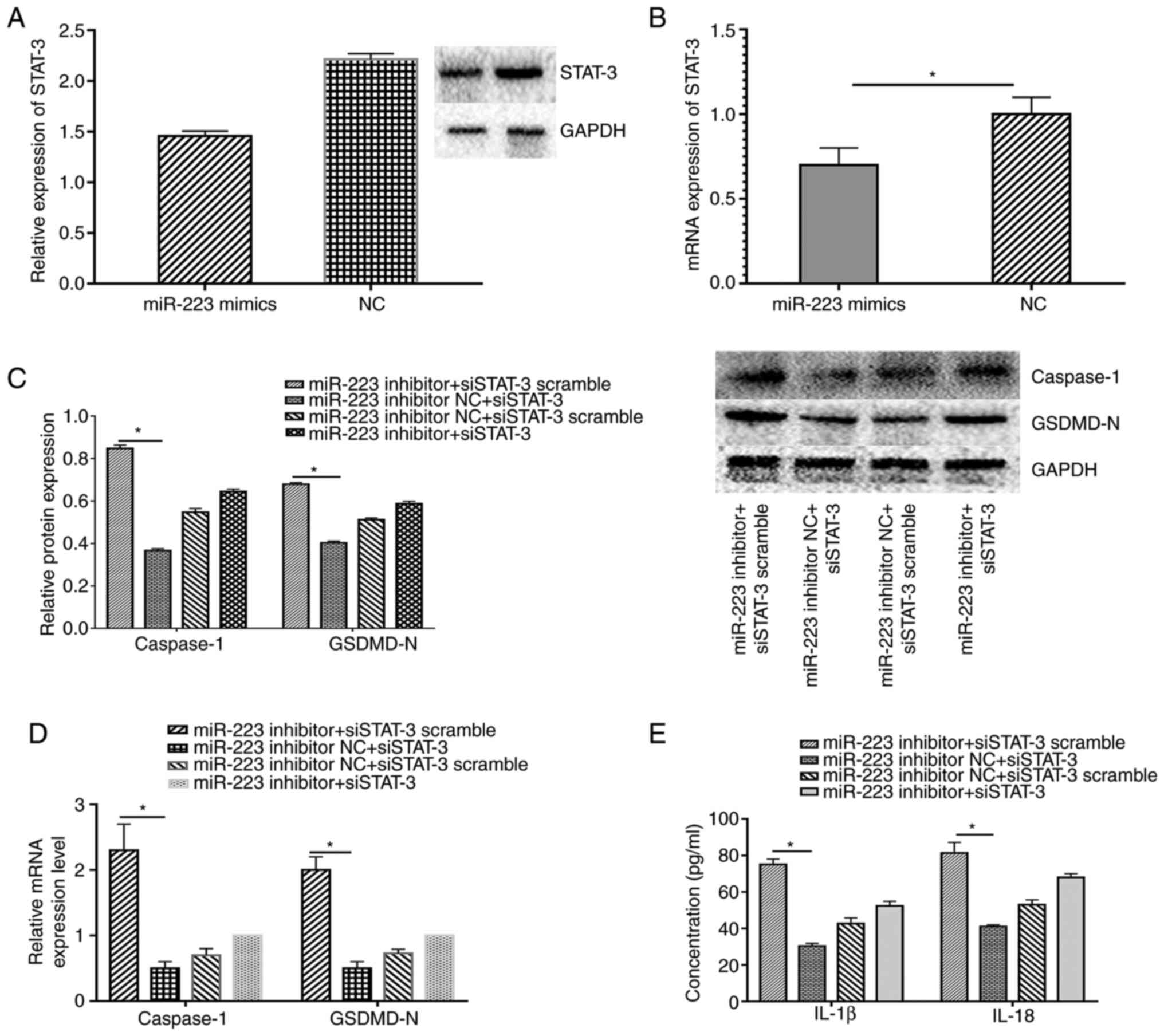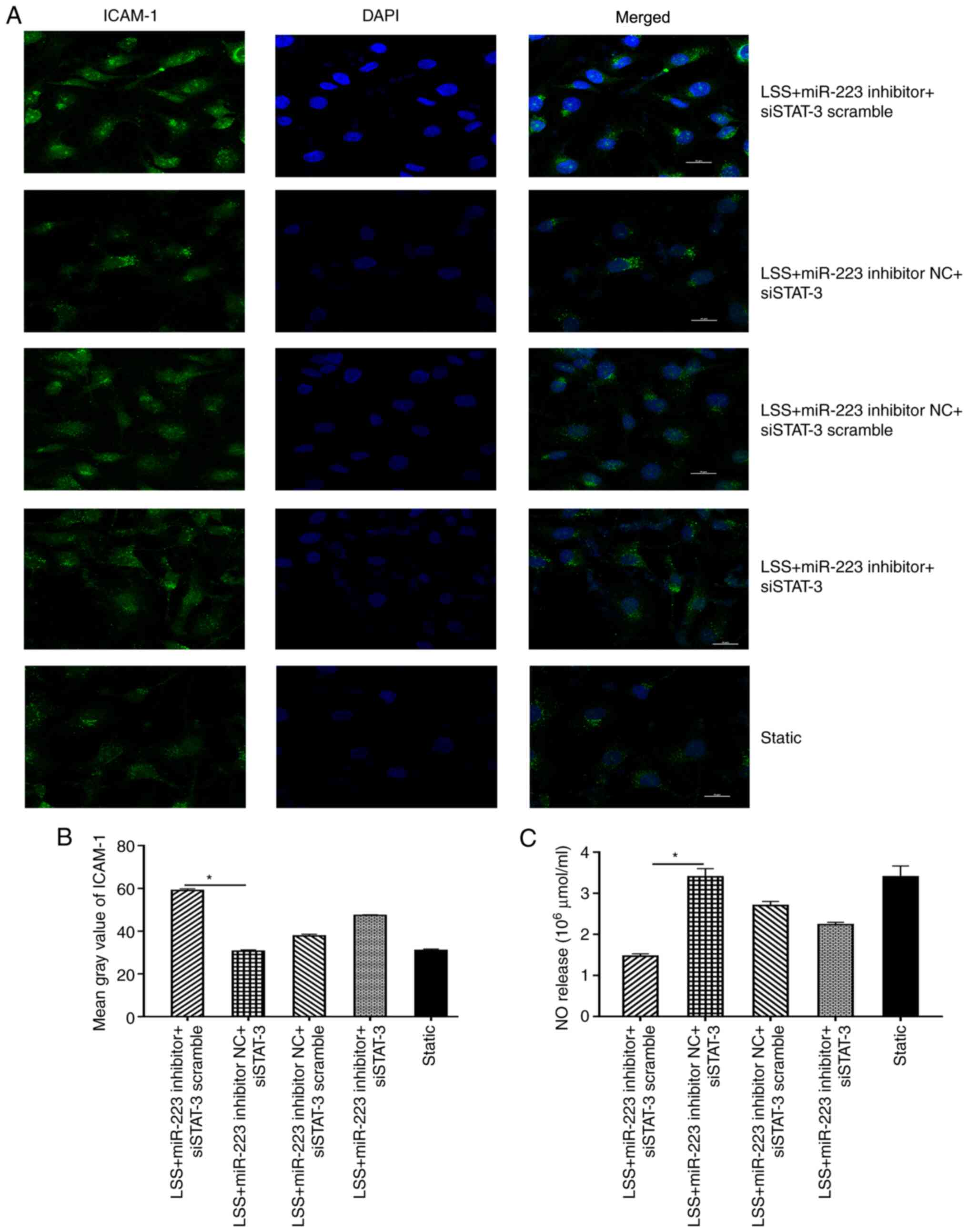|
1
|
Collet C, Onuma Y, Sonck J, Asano T,
Vandeloo B, Kornowski R, Tu S, Westra J, Holm NR, Xu B, et al:
Diagnostic performance of angiography-derived fractional flow
reserve: A systematic review and Bayesian meta-analysis. Eur Heart
J. 39:3314–3321. 2018.PubMed/NCBI View Article : Google Scholar
|
|
2
|
Roux E, Bougaran P, Dufourcq P and
Couffinhal T: Fluid shear stress sensing by the endothelial layer.
Front Physiol. 11(861)2020.PubMed/NCBI View Article : Google Scholar
|
|
3
|
Morita T, Kurihara H, Maemura K, Yoshizumi
M, Nagai R and Yazaki Y: Role of Ca2+ and protein kinase C in shear
stress-induced actin depolymerization and endothelin 1 gene
expression. Circ Res. 75:630–636. 1994.PubMed/NCBI View Article : Google Scholar
|
|
4
|
Zarins CK, Giddens DP, Bharadvaj BK,
Sottiurai VS, Mabon RF and Glagov S: Carotid bifurcation
atherosclerosis. Quantitative correlation of plaque localization
with flow velocity profiles and wall shear stress. Circ Res.
53:502–514. 1983.PubMed/NCBI View Article : Google Scholar
|
|
5
|
Sun H, Gusdon AM and Qu S: Effects of
melatonin on cardiovascular diseases: Progress in the past year.
Curr Opin Lipidol. 27:408–413. 2016.PubMed/NCBI View Article : Google Scholar
|
|
6
|
Pourhanifeh MH, Dehdashtian E,
Hosseinzadeh A, Sezavar SH and Mehrzadi S: Clinical application of
melatonin in the treatment of cardiovascular diseases: Current
evidence and new insights into the cardioprotective and
cardiotherapeutic properties. Cardiovasc Drugs Ther, Sep 14, 2020
(Epub ahead of print) doi: 10.1007/s10557-020-07052-3.
|
|
7
|
Cook DN, Kang HS and Jetten AM: Retinoic
acid-related orphan receptors (RORs): Regulatory functions in
immunity, development, circadian rhythm, and metabolism. Nucl
Receptor Res. 2(101185)2015.PubMed/NCBI View Article : Google Scholar
|
|
8
|
Zhao CN, Wang P, Mao YM, Dan YL, Wu Q, Li
XM, Wang DG, Davis C, Hu W and Pan HF: Potential role of melatonin
in autoimmune diseases. Cytokine Growth Factor Rev. 48:1–10.
2019.PubMed/NCBI View Article : Google Scholar
|
|
9
|
Han Y, Zhang J, Huang S, Cheng N, Zhang C,
Li Y, Wang X, Liu J, You B and Du J: MicroRNA-223-3p inhibits
vascular calcification and the osteogenic switch of vascular smooth
muscle cells. J Biol Chem. 296(100483)2021.PubMed/NCBI View Article : Google Scholar
|
|
10
|
Livak KJ and Schmittgen TD: Analysis of
relative gene expression data using real-time quantitative PCR and
the 2(-Delta Delta C(T)) method. Methods. 25:402–408.
2001.PubMed/NCBI View Article : Google Scholar
|
|
11
|
Wang D, Wang Z, Zhang L and Wang Y: Roles
of cells from the arterial vessel wall in atherosclerosis.
Mediators Inflamm. 2017(8135934)2017.PubMed/NCBI View Article : Google Scholar
|
|
12
|
Resnick N, Yahav H, Shay-Salit A, Shushy
M, Schubert S, Zilberman LC and Wofovitz E: Fluid shear stress and
the vascular endothelium: For better and for worse. Prog Biophys
Mol Biol. 81:177–199. 2003.PubMed/NCBI View Article : Google Scholar
|
|
13
|
Davies PF, Civelek M, Fang Y and Fleming
I: The atherosusceptible endothelium: endothelial phenotypes in
complex haemodynamic shear stress regions in vivo. Cardiovasc Res.
99:315–327. 2013.PubMed/NCBI View Article : Google Scholar
|
|
14
|
Baeyens N: Fluid shear stress sensing in
vascular homeostasis and remodeling: Towards the development of
innovative pharmacological approaches to treat vascular
dysfunction. Biochem Pharmacol. 158:185–191. 2018.PubMed/NCBI View Article : Google Scholar
|
|
15
|
Claustrat B and Leston J: Melatonin:
Physiological effects in humans. Neurochirurgie. 61:77–84.
2015.PubMed/NCBI View Article : Google Scholar
|
|
16
|
Jetten AM, Kurebayashi S and Ueda E: The
ROR nuclear orphan receptor subfamily: Critical regulators of
multiple biological processes. Prog Nucleic Acid Res Mol Biol.
69:205–247. 2001.PubMed/NCBI View Article : Google Scholar
|
|
17
|
Acuña-Castroviejo D, Escames G, Venegas C,
Díaz-Casado ME, Lima-Cabello E, López LC, Rosales-Corral S, Tan DX
and Reiter RJ: Extrapineal melatonin: Sources, regulation, and
potential functions. Cell Mol Life Sci. 71:2997–3025.
2014.PubMed/NCBI View Article : Google Scholar
|
|
18
|
Ding S, Lin N, Sheng X, Zhao Y, Su Y, Xu
L, Tong R, Yan Y, Fu Y, He J, et al: Melatonin stabilizes
rupture-prone vulnerable plaques via regulating macrophage
polarization in a nuclear circadian receptor RORα-dependent manner.
J Pineal Res. 67(e12581)2019.PubMed/NCBI View Article : Google Scholar
|
|
19
|
Migita H, Satozawa N, Lin JH, Morser J and
Kawai K: RORalpha1 and RORalpha4 suppress TNF-alpha-induced VCAM-1
and ICAM-1 expression in human endothelial cells. FEBS Lett.
557:269–274. 2004.PubMed/NCBI View Article : Google Scholar
|
|
20
|
Delerive P, Monté D, Dubois G, Trottein F,
Fruchart-Najib J, Mariani J, Fruchart JC and Staels B: The orphan
nuclear receptor ROR alpha is a negative regulator of the
inflammatory response. EMBO Rep. 2:42–48. 2001.PubMed/NCBI View Article : Google Scholar
|
|
21
|
Besnard S, Heymes C, Merval R, Rodriguez
M, Galizzi JP, Boutin JA, Mariani J and Tedgui A: Expression and
regulation of the nuclear receptor RORalpha in human vascular
cells. FEBS Lett. 511:36–40. 2002.PubMed/NCBI View Article : Google Scholar
|
|
22
|
Khachigian LM: Transcription factors
targeted by miRNAs regulating smooth muscle cell growth and intimal
thickening after vascular injury. Int J Mol Sci.
20(5445)2019.PubMed/NCBI View Article : Google Scholar
|
|
23
|
Zhao L, Gu C, Ye M, Zhang Z, Li L, Fan W
and Meng Y: Integration analysis of microRNA and mRNA paired
expression profiling identifies deregulated microRNA-transcription
factor-gene regulatory networks in ovarian endometriosis. Reprod
Biol Endocrinol. 16(4)2018.PubMed/NCBI View Article : Google Scholar
|
|
24
|
Zhang Y, Liu X, Bai X, Lin Y, Li Z, Fu J,
Li M, Zhao T, Yang H, Xu R, et al: Melatonin prevents endothelial
cell pyroptosis via regulation of long noncoding RNA
MEG3/miR-223/NLRP3 axis. J Pineal Res. 64:2018.PubMed/NCBI View Article : Google Scholar
|
|
25
|
Zhu X, Chen S, Jiang Y, Xu Y, Zhao Y, Chen
L, Li C and Zhou X: Analysis of miRNA expression profiles in
melatonin-exposed GC-1 spg cell line. Gene. 642:513–521.
2018.PubMed/NCBI View Article : Google Scholar
|
|
26
|
Hardeland R: Melatonin, noncoding RNAs,
messenger RNA stability and epigenetics-evidence, hints, gaps and
perspectives. Int J Mol Sci. 15:18221–18252. 2014.PubMed/NCBI View Article : Google Scholar
|
|
27
|
Tian Y, Gong Z, Zhao R and Zhu Y:
Melatonin inhibits RANKL-induced osteoclastogenesis through the
miR-882/Rev-erbα axis in Raw264.7 cells. Int J Mol Med. 47:633–642.
2021.PubMed/NCBI View Article : Google Scholar
|
|
28
|
Murodumi H, Shigeishi H, Kato H, Yokoyama
S, Sakuma M, Tada M, Ono S, Rahman MZ, Ohta K and Takechi M:
Melatonin-induced miR-181c-5p enhances osteogenic differentiation
and mineralization of human jawbone-derived osteoblastic cells. Mol
Med Rep. 22:3549–3558. 2020.PubMed/NCBI View Article : Google Scholar
|
|
29
|
Boukhtouche F, Mariani J and Tedgui A: The
‘CholesteROR’ protective pathway in the vascular system.
Arterioscler Thromb Vasc Biol. 24:637–643. 2004.PubMed/NCBI View Article : Google Scholar
|
|
30
|
Wang Y, Solt LA and Burris TP: Regulation
of FGF21 expression and secretion by retinoic acid receptor-related
orphan receptor alpha. J Biol Chem. 285:15668–15673.
2010.PubMed/NCBI View Article : Google Scholar
|
|
31
|
Chang W, Lin J, Dong J and Li D:
Pyroptosis: An inflammatory cell death implicates in
atherosclerosis. Med Hypotheses. 81:484–486. 2013.PubMed/NCBI View Article : Google Scholar
|
|
32
|
Xu YJ, Zheng L, Hu YW and Wang Q:
Pyroptosis and its relationship to atherosclerosis. Clin Chim Acta.
476:28–37. 2018.PubMed/NCBI View Article : Google Scholar
|
|
33
|
Yin DL, Zhao XH, Zhou Y, Wang Y, Duan P,
Li QX, Xiong Z, Zhang YY, Chen Y, He H, et al: Association between
the ICAM-1 gene polymorphism and coronary heart disease risk: A
meta-analysis. Biosci Rep. 39(BSR20180923)2019.PubMed/NCBI View Article : Google Scholar
|
|
34
|
Chen J, Zhang J, Wu J, Zhang S, Liang Y,
Zhou B, Wu P and Wei D: Low shear stress induced vascular
endothelial cell pyroptosis by TET2/SDHB/ROS pathway. Free Radic
Biol Med. 162:582–591. 2021.PubMed/NCBI View Article : Google Scholar
|
|
35
|
Hoseini Z, Sepahvand F, Rashidi B,
Sahebkar A, Masoudifar A and Mirzaei H: NLRP3 inflammasome: Its
regulation and involvement in atherosclerosis. J Cell Physiol.
233:2116–2132. 2018.PubMed/NCBI View Article : Google Scholar
|
|
36
|
Raman K, Chong M, Akhtar-Danesh GG,
D'Mello M, Hasso R, Ross S, Xu F and Paré G: Genetic markers of
inflammation and their role in cardiovascular disease. Can J
Cardiol. 29:67–74. 2013.PubMed/NCBI View Article : Google Scholar
|
|
37
|
Mulvihill NT, Foley JB, Murphy RT, Pate G,
Crean PA and Walsh M: Enhanced endothelial activation in diabetic
patients with unstable angina and non-Q-wave myocardial infarction.
Diabet Med. 18:979–983. 2001.PubMed/NCBI View Article : Google Scholar
|
|
38
|
Cheng C, Tempel D, van Haperen R, van der
Baan A, Grosveld F, Daemen MJ, Krams R and de Crom R:
Atherosclerotic lesion size and vulnerability are determined by
patterns of fluid shear stress. Circulation. 113:2744–2753.
2006.PubMed/NCBI View Article : Google Scholar
|
|
39
|
Wei G, Zhu D, Sun Y, Zhang L, Liu X, Li M
and Gu J: The protective effects of azilsartan against oscillatory
shear stress-induced endothelial dysfunction and inflammation are
mediated by KLF6. J Biochem Mol Toxicol. 35:1–8. 2021.PubMed/NCBI View Article : Google Scholar
|
|
40
|
Conway DE, Williams MR, Eskin SG and
McIntire LV: Endothelial cell responses to atheroprone flow are
driven by two separate flow components: Low time-average shear
stress and fluid flow reversal. Am J Physiol Heart Circ Physiol.
298:H367–H374. 2010.PubMed/NCBI View Article : Google Scholar
|
|
41
|
Li Y, Sun D, Zheng Y and Cheng Y: Swimming
exercise activates aortic autophagy and limits atherosclerosis in
ApoE-/- mice. Obes Res Clin Pract. 14:264–270.
2020.PubMed/NCBI View Article : Google Scholar
|
|
42
|
Veneroso C, Tuñón MJ, González-Gallego J
and Collado PS: Melatonin reduces cardiac inflammatory injury
induced by acute exercise. J Pineal Res. 47:184–191.
2009.PubMed/NCBI View Article : Google Scholar
|
|
43
|
Zhong L, Simard MJ and Huot J: Endothelial
microRNAs regulating the NF-κB pathway and cell adhesion molecules
during inflammation. FASEB J. 32:4070–4084. 2018.PubMed/NCBI View Article : Google Scholar
|
|
44
|
Han X, Wang Y, Chen H, Zhang J, Xu C, Li J
and Li M: Enhancement of ICAM-1 via the JAK2/STAT3 signaling
pathway in a rat model of severe acute pancreatitis-associated lung
injury. Exp Ther Med. 11:788–796. 2016.PubMed/NCBI View Article : Google Scholar
|
|
45
|
Peiffer V, Sherwin SJ and Weinberg PD:
Does low and oscillatory wall shear stress correlate spatially with
early atherosclerosis? A systematic review. Cardiovasc Res.
99:242–250. 2013.PubMed/NCBI View Article : Google Scholar
|
|
46
|
Siasos G, Sara JD, Zaromytidou M, Park KH,
Coskun AU, Lerman LO, Oikonomou E, Maynard CC, Fotiadis D, Stefanou
K, et al: Local low shear stress and endothelial dysfunction in
patients with nonobstructive coronary atherosclerosis. J Am Coll
Cardiol. 71:2092–2102. 2018.PubMed/NCBI View Article : Google Scholar
|
|
47
|
Eshtehardi P and Teng Z: Protective or
destructive: High wall shear stress and atherosclerosis.
Atherosclerosis. 251:501–503. 2016.PubMed/NCBI View Article : Google Scholar
|
|
48
|
Rashad S, Han X, Saqr K, Tupin S, Ohta M,
Niizuma K and Tominaga T: Epigenetic response of endothelial cells
to different wall shear stress magnitudes: A report of new
mechano-miRNAs. J Cell Physiol. 235:7827–7839. 2020.PubMed/NCBI View Article : Google Scholar
|















